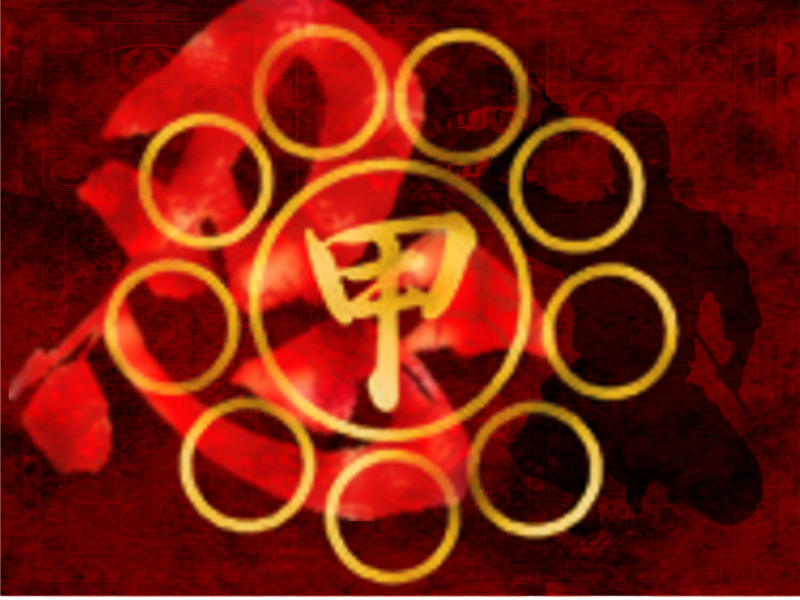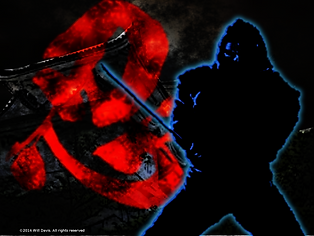
History of the Koga Ryu Ninja


The Shinobi have existed since the very foundations of Japan, but the first of the Shadow Schools of the Ninja were the Koka/Koga Ryu 『甲賀流』and their more famous counterpart, the Iga Ryu 『伊賀流』.
Spying in Japan dates as far back as Prince Shōtoku (572–622), although the origins of the Ninja date much earlier. According to Shōninki, the first open usage of ninjutsu during a military campaign was in the Gempei War, when 『源九郎義経』Minamoto no Kuro Yoshitsune chose warriors to serve as shinobi during a battle; this manuscript goes on to say that, during the Kenmu era, Kusonoki Masashige used ninjutsu frequently. According to footnotes in this manuscript, the Gempei war lasted from 1180 to 1185, and the Kenmu Restoration occurred between 1333 and 1336.
Throughout history the shinobi have been seen as assassins, scouts and spies who were hired mostly by territorial lords known as the Daimyo. They conducted operations that the samurai were forbidden to partake in. They are mainly noted for their use of stealth and deception.
The ancient system of Koka Ryu Ninjutsu began in the Tengyo Era (938-946 AD) in an area southwest of Omi Province, when Mochizuki Saburo Kaneie, the third son of Suwa Saemon Minamoto Shigeyori triumphed in battle over Taira-no-Masakado, who led an uprising in the name of the Taira clan. For his proven valor and heroism in battle, Kaniei was awarded part of the Omi Province by the Japanese Imperial Family, and changed his name to Koka-Oni-no-Kami-Kaneie. His son, Ieichika, would study the art of Genjutsu from the Yamabushi Tatsumaki Hoshi. Giving birth to what would be the Koka-ryu Shinobijutsu. The system of Koka-ryu was transimitted to 53 families of Jizamurai (地侍;local samurai) when they were joined by the troops who had fought with them against the Ashikaga during the Nanboku-cho War (1335-1395).
Sasaki Rokkaku of Ōmi Province, using Kannonji Castle as a base, started to steadily build up military might. He made light of commands from the Ashikaga shogunate, and eventually began to ignore the shogunate altogether. In 1487, General Ashikaga Yoshihisa brought with him an army to stamp out this rebellion, and a battle between Ashikaga and Rokkaku’s camps ensued. Ashikaga mobilized daimyo from several provinces against the castle of Kannonji, the headquarters of the Rokkaku; as a result, Rokkaku Masayori and Rokkaku Takayori (Masayori's son) were forced to flee to the castle of Kōka. The factual accuracy of their escape is debated and it is likely that they gave up the town to avoid a direct confrontation instead.
Ashikaga then moved his base to Anshiyoji of Kurita District and attacked the castle of Kōka. Kōka fell, but the Rokkaku duo escaped again and ordered the Kōka warriors who followed them to mount a heavy resistance against Ashikaga using guerrilla warfare. Exploiting their geographical advantage in the mountains, the Kōka warriors launched a wide range of surprise attacks against Ashikaga’s forces, and tormented them by using Katonjutsu (火遁術;fire and explosives) and Entonjutsu (煙遁術; Smoke Screening techniques) on Ashikaga’s camp during the night. The guerrilla warfare prevented a final showdown, until Ashikaga died in battle in 1489, ending the three-year conflict and sparing the lives of the Rokkaku duo.
The elusive and effective guerrilla warfare used by the Kōka warriors became well known throughout the whole country. This also marked the first time that the ninja of Kōka were drafted as a regular army by their lord. Previously, they were only mercenaries and it was not uncommon to have warriors from Kōka on both sides of a battle. As a result of this victory, the local samurai in the 53 families who participated in this battle were called
Koka Gojusanke (甲賀流五十三家; the 53 Clans of Koka-Ryu).These clans are listed as follows (special thanks to Soke Anshu Christa Jacobson for needed corrections ^_^:
(01) 山中家; Yamanaka-ryu
(02) 伴家; Tomo-ryu (later to 戸猛流; Tomo-ryu)
(03) 美濃部家; Minobe-ryu
(04) 黒川家; Kurokawa-ryu
(05) 頓宮家; Tongu-ryu
(06) 大野家; Ono-ryu
(07) 岩室家; Iwamuro-ryu
(08) 芥川家; Akutagawa-ryu
(09) 隠岐家; Oki-ryu
(10) 佐治家; Saji-ryu
(11) 神保家; Jinbo-ryu
(12) 大河原家; Ogawara-ryu
(13) 大原家; Ohara-ryu
(14) 和田家; Wada-ryu
(15) 高峰家; Takamine-ryu
(16) 池田家; Ikeda-ryu
(17) 滝家; Taki-ryu
(18) 上野家; Ueno-ryu
(19) 内貴家; Naiki-ryu
(20) 鵜飼家; Ukai-ryu
(21) 服部家; Hattori-ryu
(22) 小泉家; Koizumi-ryu
(23) 倉治家; Kuraji-ryu
(24) 夏見家; Natsumi-ryu
(25) 杉谷家; Sugitani-ryu
(26) 針家; Hari-ryu
(27) 小川家; Ogawa-ryu
(28) 大久保家; Okubo-ryu
(29) 上田家; Ueda-ryu
(30) 野田家; Noda-ryu
(31) 岩根家; Iwane-ryu
(33) 青木家; Aoki-ryu
(34) 宮島家; Miyajima-ryu
(35) 杉山家; Sugiyama-ryu
(36) 葛城家; Katsuragi-ryu
(37) 三雲家; Mikumo-ryu
(38) 望月家; Mochizuki-ryu
(39) 牧村家; Makimura-ryu
(40) 八田家; Hatta-ryu
(41) 高野家; Takano-ryu
(42) 上山家; Ueyama-ryu
(43) 高山家; Takayama-ryu
(44) 守田家; Morita-ryu
(45) 嵯峨家; Saga-ryu
(46) 鳥居家; Torii-ryu
(47) 平子家; Hirako-ryu
(48) 多羅尾家; Tarao-ryu
(49) 土山家; Tsuchiyama-ryu
(50) 山上家; Yamagami-ryu
(51) 饗庭家; Aeba-ryu
(52) 長野家; Nagano-ryu
(53) 中山家; Nakayama-ryu
During the Muromachi Period (1336-1573) the 53 clans developed a method of Ninjutsu native to their region exclusively to their clans, carrying out clandestine actvities.
Eight families took up little by little the leadership of Koka-Ryu. The eight clans were Koga, Mochizuki, Ugai, Naikii, Akutagawa, Ueno, Ban, and Nakano. Groups in the Koga ryu such as Hiryu-gumi, Kakuryu-gumi, Tachibana Hachi-Tengu-gumi, and Kawachi-Yon Tengu-gumi had their own Ninjutsu masters of high renown. During the Hokuto period (1441-1451), the leading heirs were Koka Saburo, Mochizuki Goro, Ugai Ryuhoshi, Naiki Fujibe, and Akutagawa Kazuma. Koka Saburo II, Mochizuki Yaijiro, Ugai Chiaki, Naiki Gohei and Akutagawa Tenoei, were hired by the Sasaki family, who was the Daimyo in that area, to lead their troops against Ashikaga Yoshizawa during the Bunmei period (1469-1487). One hundred years later the Sasaki family again hired Ninjas from both the Koka and Iga (as well as Samurai) in 1570, with the hopes of destroying Oda Nobunaga. Even though the Samurai were trained rigorously as ordered by the Koga and Iga Jonin, General Nobunaga still defeated them. For centuries, both the Iga and the Koka ninja groups continued training themselves to be amongst the best warriors the world has ever seen. They continued in relative quietness until the twentieth century, when they started to export their teachings to others that they conscidered worthy outside the homeland. After the hostilities of WWII ended, the world was open to the Ninja. Free to travel and to coexist amongst all peoples, they continued passing their secrets from master to student, and father to son. Their own country had placed restrictions and hindered the Ninja arts to flourish, even more than it did decades ago. In the early 1960's a small group of Ninjas (Koga) immigrated to the western nations of Canada and the United States. Others traveled to countries that belonged to NATO, with the U.S.A. as it's founding leader. Many of these Koga Ninjas were businessmen and professionals looking to blend in within the confines of their new homes, and intentionally prepared for the passing of all the secrets of the ninja arts to any who they found worthy to study.
In the several years since then, it is speculated that the Koga-ryu Ninja have died out after the death of Fujita Seiko, 14th Soke of the original Koga-ryu Wada-Ha of Ninjutsu. In reality he merely chose not to leave an heir to the traditional teachings, leaving his disciples and grand-disciples to modify the teachings to the modern day era.
